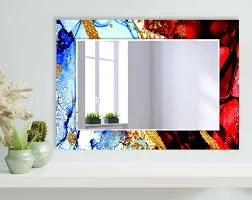

Understanding the Cost of Tempered Glass A Comprehensive Overview
Tempered glass, also known as toughened glass, is a type of safety glass that undergoes a special thermal treatment to increase its strength. This process involves heating the glass to high temperatures and then rapidly cooling it, creating a glass that is much stronger than regular glass. While tempered glass offers numerous advantages, understanding its cost implications is crucial for both consumers and businesses alike.
Factors Influencing the Cost of Tempered Glass
1. Manufacturing Process The production of tempered glass involves a careful and intricate process. The raw materials are subjected to high temperatures, which incurs significant energy costs. The need for specialized equipment, such as tempering furnaces, also adds to the overall manufacturing costs.
2. Thickness and Size Just like conventional glass, tempered glass is available in various sizes and thicknesses. The cost will vary significantly depending on the dimensions required for a project. Thicker glass is generally more expensive due to the increased amount of material and the more complex processing needed.
3. Customizations Many consumers opt for customized tempered glass solutions that might include unique shapes, sizes, or even laminated finishes. Custom features not only increase the labor involved in cutting and preparing the glass but also can raise costs due to the need for specialized machinery.
4. Market Demand The cost of tempered glass can fluctuate based on market demand. In areas where there is a booming construction industry or a surge in renovation projects, the demand for tempered glass may outstrip supply, driving prices higher. Conversely, during economic downturns, the prices may stabilize or even decrease as demand wanes.

5. Transportation and Distribution The cost of transporting tempered glass can also be significant. Because the glass is fragile and can break easily, additional care and protective measures are necessary during shipping. This not only adds to the cost but also can lead to longer delivery times, which may further impact pricing.
6. Installation Costs It’s important to note that the cost of tempered glass is not solely the price of the glass itself. Installation costs can vary based on the complexity of the installation process, location, and the need for additional framing or support structures. Professional installation ensures that the glass is fitted securely, which is particularly important for safety glass.
Cost Comparison Tempered vs. Regular Glass
When considering the cost of tempered glass, it’s helpful to compare it with regular glass. Generally, tempered glass is more expensive—often two to five times the cost of standard glass. However, the benefits of tempered glass, including its safety features (it shatters into small pieces rather than sharp shards) and higher thermal resistance, can justify the price difference in many cases. In applications like shower doors, glass balustrades, and storefronts, the added safety and durability of tempered glass make it a worthwhile investment.
Conclusion
In conclusion, the cost of tempered glass is influenced by various factors, including the manufacturing process, size and thickness, customization options, market demand, transportation logistics, and installation requirements. While the initial cost may be higher than regular glass, the benefits of increased safety, durability, and aesthetic appeal often outweigh the financial considerations. For consumers and businesses, understanding these factors can aid in making informed decisions when purchasing tempered glass for their projects. The investment in tempered glass not only enhances the safety and functionality of spaces but can also add significant value to properties. As technology continues to advance, it is essential to stay updated on market trends and emerging options within the tempered glass industry.